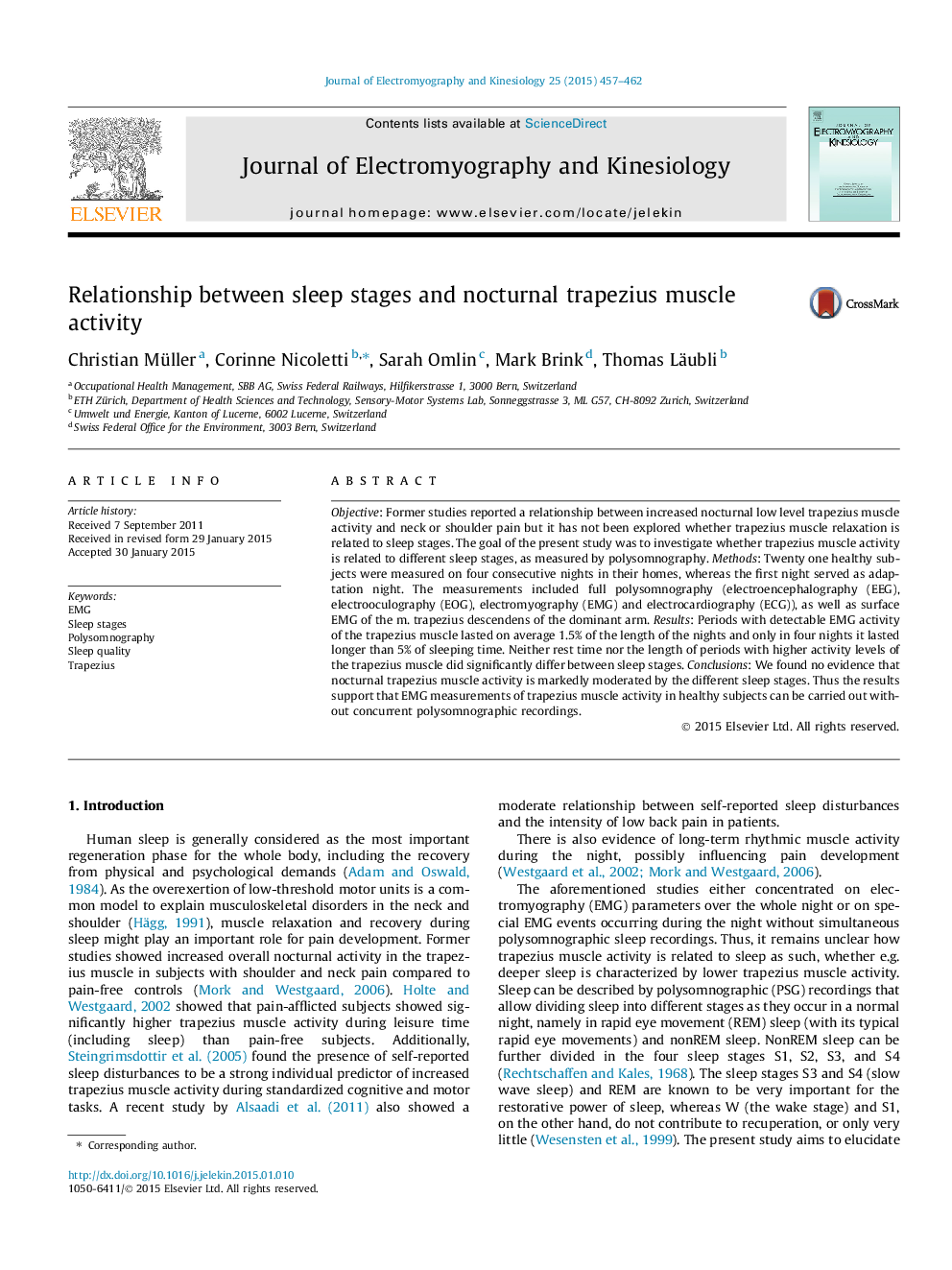| Article ID | Journal | Published Year | Pages | File Type |
|---|---|---|---|---|
| 6210289 | Journal of Electromyography and Kinesiology | 2015 | 6 Pages |
Objective: Former studies reported a relationship between increased nocturnal low level trapezius muscle activity and neck or shoulder pain but it has not been explored whether trapezius muscle relaxation is related to sleep stages. The goal of the present study was to investigate whether trapezius muscle activity is related to different sleep stages, as measured by polysomnography. Methods: Twenty one healthy subjects were measured on four consecutive nights in their homes, whereas the first night served as adaptation night. The measurements included full polysomnography (electroencephalography (EEG), electrooculography (EOG), electromyography (EMG) and electrocardiography (ECG)), as well as surface EMG of the m. trapezius descendens of the dominant arm. Results: Periods with detectable EMG activity of the trapezius muscle lasted on average 1.5% of the length of the nights and only in four nights it lasted longer than 5% of sleeping time. Neither rest time nor the length of periods with higher activity levels of the trapezius muscle did significantly differ between sleep stages. Conclusions: We found no evidence that nocturnal trapezius muscle activity is markedly moderated by the different sleep stages. Thus the results support that EMG measurements of trapezius muscle activity in healthy subjects can be carried out without concurrent polysomnographic recordings.
